In some European countries, a private doctor visit costs less than a dinner for two — in another, it’s two times more expensive than in the US.
And what about the quality?
After helping hundreds of expats move across Europe, I realized those simple rankings you see online are dangerously misleading. Because when you’re choosing where to live, healthcare is not just a number — it’s peace of mind.
You need the full picture.
- What does private care actually cost?
- How long do patients need to wait?
- How do locals rate their own systems — and would you trust your health to them?
This isn’t another outdated ranking. We combined four critical factors that actually matter for expats – the country at 27th charges eight times more for doctor visits than the country at number 1.
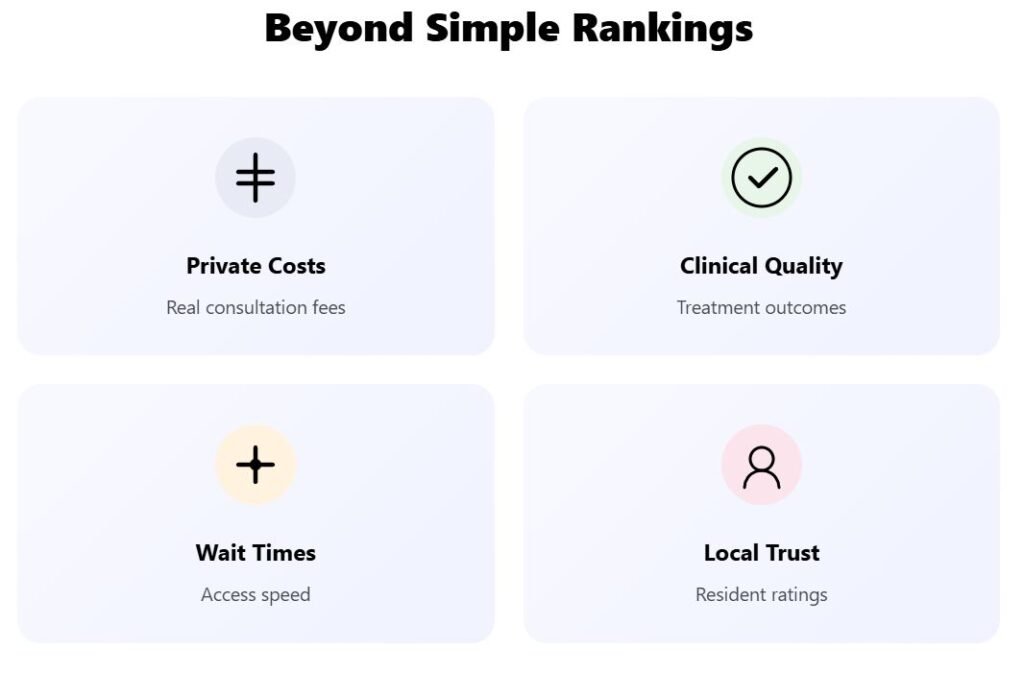
But cost is just one factor.
Wait until you see how clinical excellence and local satisfaction completely reshape these rankings. The top of this list delivers world-class care at prices most people can’t believe.
The Criteria to Rank The Best Healthcare Systems in Europe
The first criterion is the average cost of a private doctor visit. This is what you pay when public systems move too slowly, or you need immediate attention. The range spans from US$16 in the cheapest EU country to US$240 in the most expensive.
Second: Euro Health Consumer Index (EHCI) scores. These measures clinical quality, patient safety, and system performance across 35 European countries.
Third: Numbeo Healthcare Index ratings. These reflect real patient experiences with accessibility, wait times, and overall satisfaction from people actually using these systems.
Fourth: opinions from locals who live with these healthcare realities year-round.
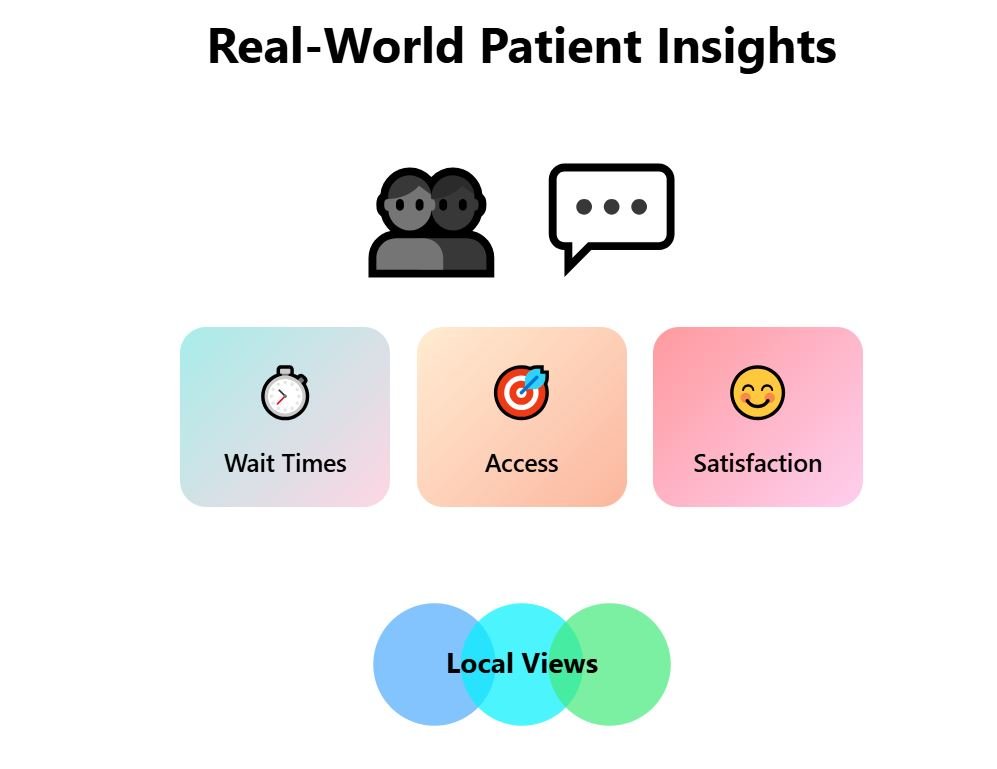
Starting from the bottom, you’ll see how even wealthy European nations can become healthcare traps for retirees.
And by the way, in this ranking we cover the 27 EU countries only — so there is no Switzerland, England, and so on.
27th Place: Denmark
Denmark tops multiple healthcare quality lists — so why does it rank dead last for expats?
Because of one factor.
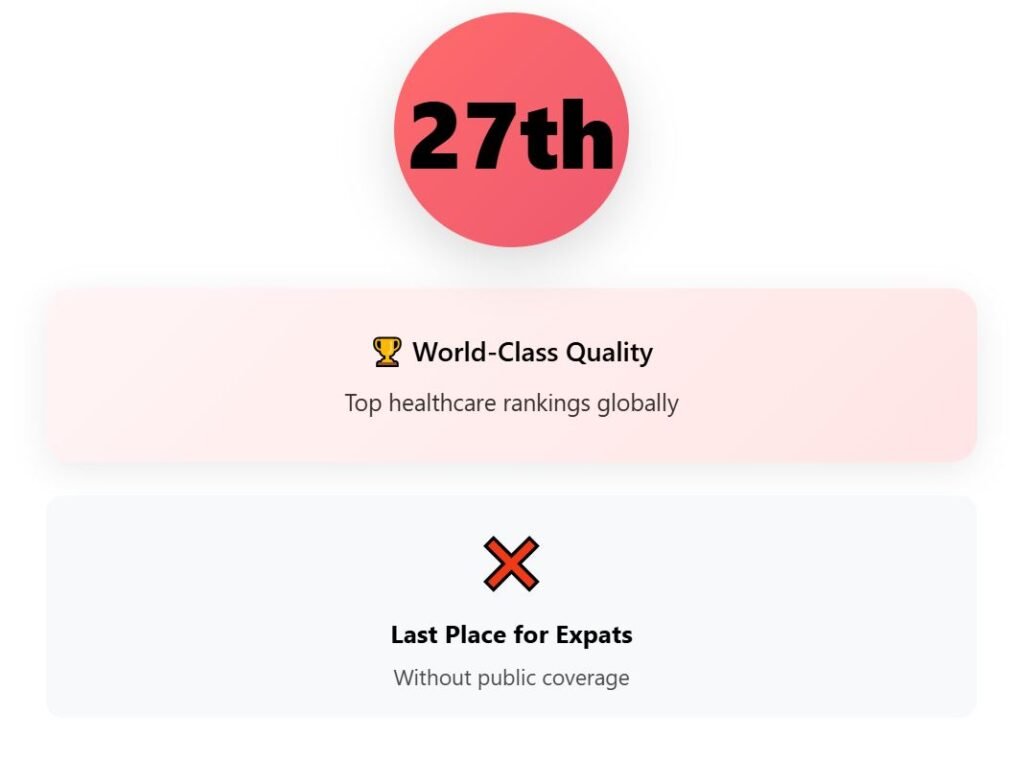
Denmark delivers excellent public care with universal coverage that works for Danish residents. But if you’re not eligible for that public coverage, you’ll pay American prices in a European system.
That’s not an exaggeration. On average, you will pay more than twice as much for a doctor consultation in Denmark as you would in the US.
The private healthcare sector operates with minimal competition and serves primarily as overflow for the public system. This creates pricing that reflects Denmark’s high labor costs and limited private market options.
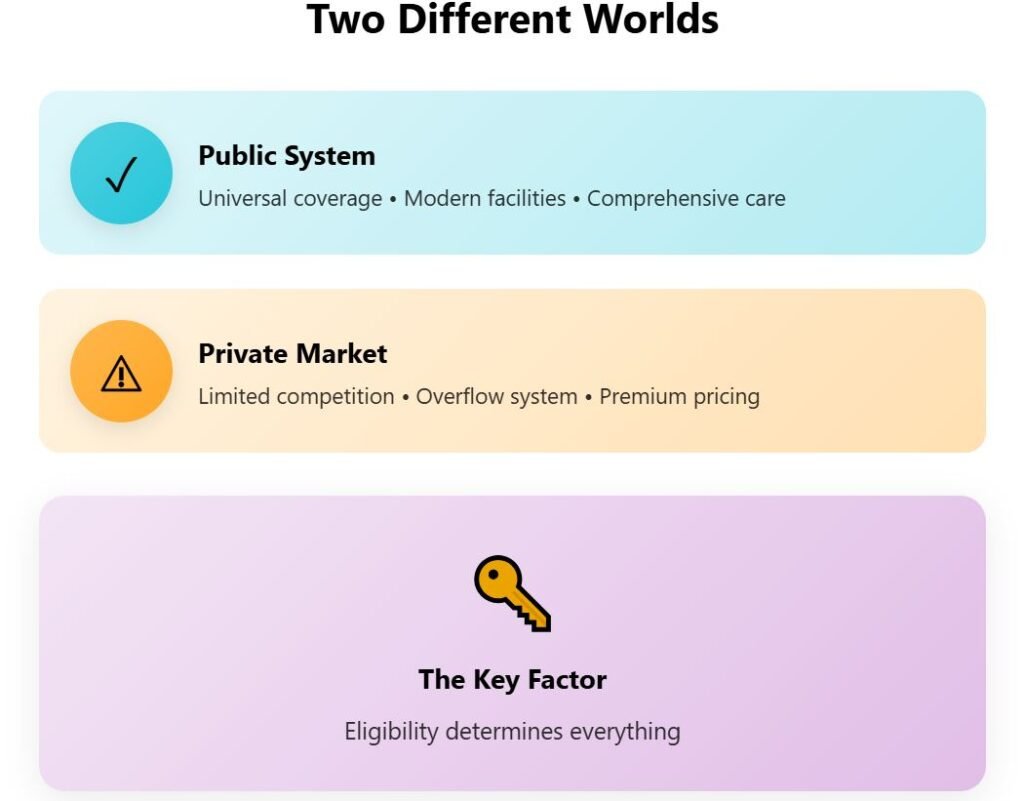
The US$240 per visit represents one of the steepest healthcare costs in the world.
26th Place: Hungary
In Hungary, private doctor visits cost on average US$70 — less than a third of Denmark’s cost — but some locals prefer to go to neighboring countries for treatment.

The EHCI score of Hungary is one of the lowest of the 35 European countries measured. The Health Index of 54.1 reflects a system in crisis.
Staff shortages generate dangerous wait times for patients. Medical professionals emigrate to Western Europe for better pay, leaving gaps in healthcare delivery that compound existing problems.
The system operates on informal payments called “gratitude payments” that turn free public care into expensive under-the-table transactions. Patients pay extra to doctors for better care or faster service, defeating the purpose of universal coverage.
The next country presents a different kind of disappointment — a wealthy nation that somehow fails to deliver healthcare value.

25th Place: Ireland
Despite economic prosperity, Ireland’s healthcare system struggles with access issues and costs that surprise many British and American retirees.

The EHCI score of 669 places Ireland in the middle tier of European healthcare systems. The Numbeo Health Index reflects low consumer satisfaction with widespread system issues.
The public system offers free care at point of use but delivers notoriously long wait times that can stretch months for non-emergency procedures. Private healthcare provides faster access but costs significantly more than mainland European alternatives.
Many expats budget for “European healthcare costs” and discover Irish private care exceeds their expectations. This forces patients into expensive private alternatives or lengthy public queues.
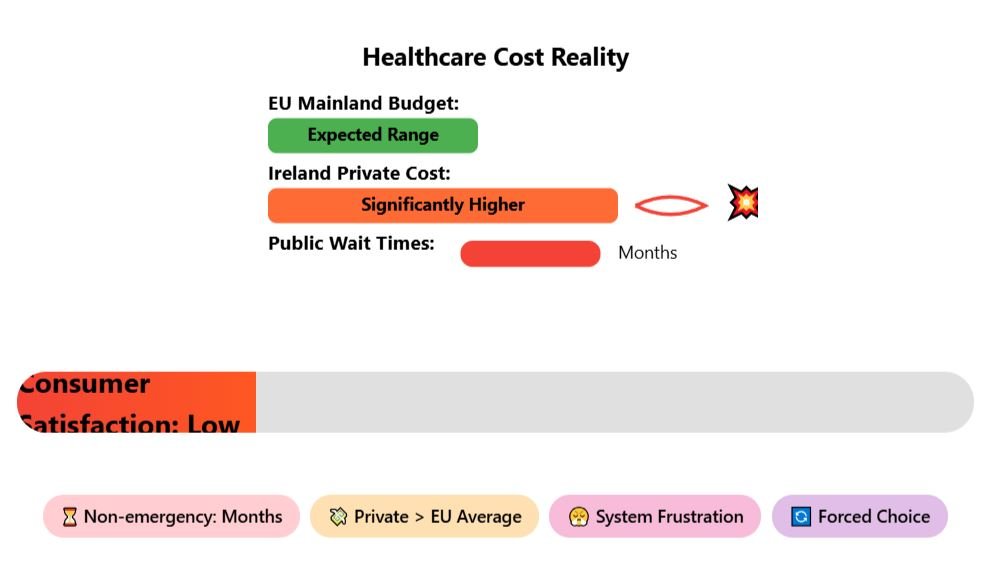
24th Place: Romania
Romania technically has universal healthcare coverage and private doctor visits averaging just US$42.
The low costs hide systematic problems: equipment shortages, rural access gaps, and infrastructure that hasn’t kept pace with EU membership. Romania has the lowest public health spending in the entire European Union.

The EHCI score of 549 ranks Romania 34th out of 35 European countries measured — the lowest in the EU. The Numbeo rating of 56.8 is just above Hungary but below most EU countries.
Even affordable private care struggles when hospitals lack modern equipment and specialists concentrate in major cities like Bucharest and Cluj, leaving smaller towns underserved.
This geographic imbalance forces many Romanians to travel for medical care in larger cities or rely on paid private providers to obtain quality treatment.
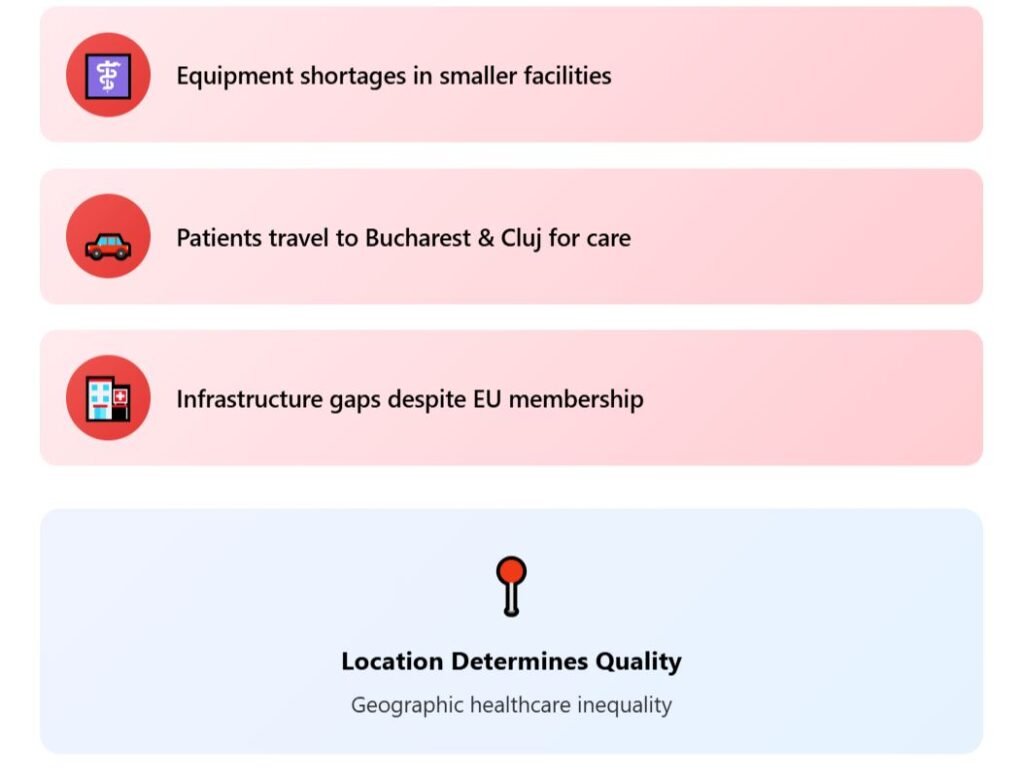
The next country shows similar post-Soviet healthcare transition challenges with better outcomes.
23rd Place: Latvia
Latvia has an average cost of US$60 for private doctor visits — a surprisingly high price for an Eastern European country.

The EHCI score of 605 ranks Latvia 30th out of 35 European countries. Aging infrastructure creates persistent challenges throughout the healthcare system.
Specialist shortages force patients to wait months for appointments and diagnostics, particularly outside Riga. During the last decade, facilities in Riga improved, but smaller cities and rural areas remain underserved.
This creates a geographic healthcare divide where capital residents access modern equipment and specialists while rural patients face outdated facilities and staff shortages. Those who can afford US$60 for a private visit receive faster care, while others navigate lengthy public queues.
22nd Place: Italy
Italy created the template for universal healthcare, but choosing the wrong region could mean choosing between excellent care and healthcare disasters.

National averages hide the reality that healthcare quality varies dramatically between northern regions with world-class facilities and southern areas with chronic underfunding.
The Servizio Sanitario Nazionale provides universal coverage, but regional implementation creates vastly different patient experiences. Some northern regions offer care comparable to Switzerland, with modern equipment, short wait times, and specialized treatments.
Meanwhile, the South struggles with basic services and long waits. Private care costs average US$80 per visit nationally but vary significantly by region. Northern regions often charge more for private consultations than their southern counterparts.
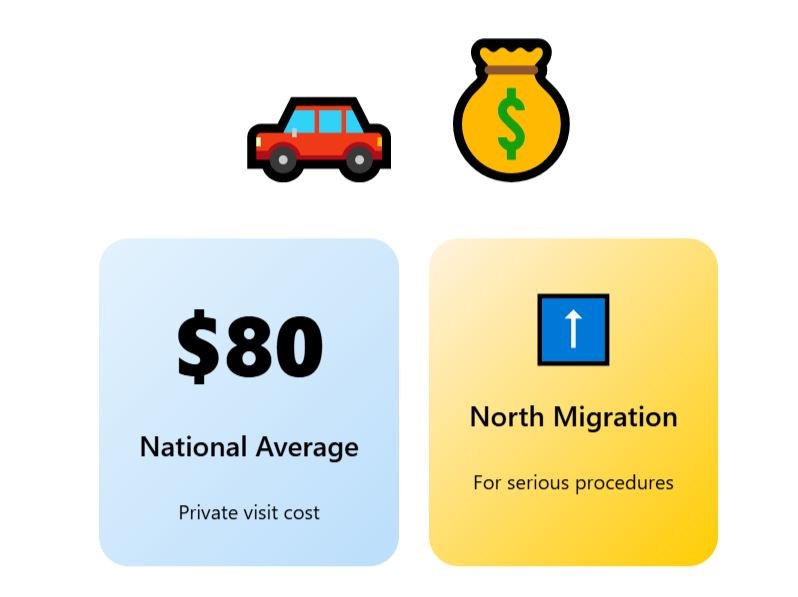
Many Southern Italians travel north for serious procedures, creating a two-tier system based on geography rather than income.
21st Place: Poland
Poland has become an economic success story, but the healthcare system struggles to keep pace with rising expectations.

The Numbeo Health Index rating of 58.0 reflects access issues and delays that frustrate patients throughout the system. A private doctor visit averages just US$36, but public system wait times and specialist shortages create problems for residents and expats who cannot afford private alternatives.
Polish doctors and nurses migrate to Western Europe for better pay, leaving gaps in domestic healthcare delivery. This brain drain creates shortages that strain the remaining professionals and extend wait times for patients seeking specialist care.
Private healthcare growth provides alternatives, but is concentrated in larger cities like Warsaw or Katowice.

Living in Poland for many years, I saw that some hospitals have modern equipment, but others look straight out from the 70s. One exception are maternity wards — in general they are really modern and good (and maybe due to low fertility rates, they also look eerily empty).
20th Place: Croatia
Croatia combines Mediterranean lifestyle appeal with EU membership, but the healthcare system reflects ongoing transition challenges.

Private doctor visits cost on average US$60, but the EHCI score of 644 ranks Croatia 24th out of 35 European countries measured.
Zagreb and Split deliver excellent emergency care and specialist treatments with modern facilities and competent hospital treatment. Tourism-focused development has improved healthcare infrastructure in coastal areas while inland regions receive less investment and attention.
There are also issues with long waiting times for an appointment. We asked a local how he would rate the Croatian public system and he told us:
“I give it a 4. If you have a referral for a specialist, you might get your appointment in 2 years. The state pushes you to do it privately and pay and the same doctors work in both hospitals. Some people complain that doctors are bad, that paramedic is bad, I never personally had issues with that. I would say that generally if you are hospitalized, you’ll be treated well.”
19th Place: Greece
Greece has an average price for a private doctor visit of just US$36 and maintains universal coverage, but economic crises have left lasting impacts on public system quality.

The financial crisis forced healthcare budget cuts that reduced services, increased wait times, and drove many Greek doctors to emigrate.
Athens and Thessaloniki show improvements with better-equipped hospitals and specialist availability, since they attract medical professionals who left smaller communities. Island and rural communities continue to face access challenges and resource limitations that create medical deserts where healthcare services remain scarce.
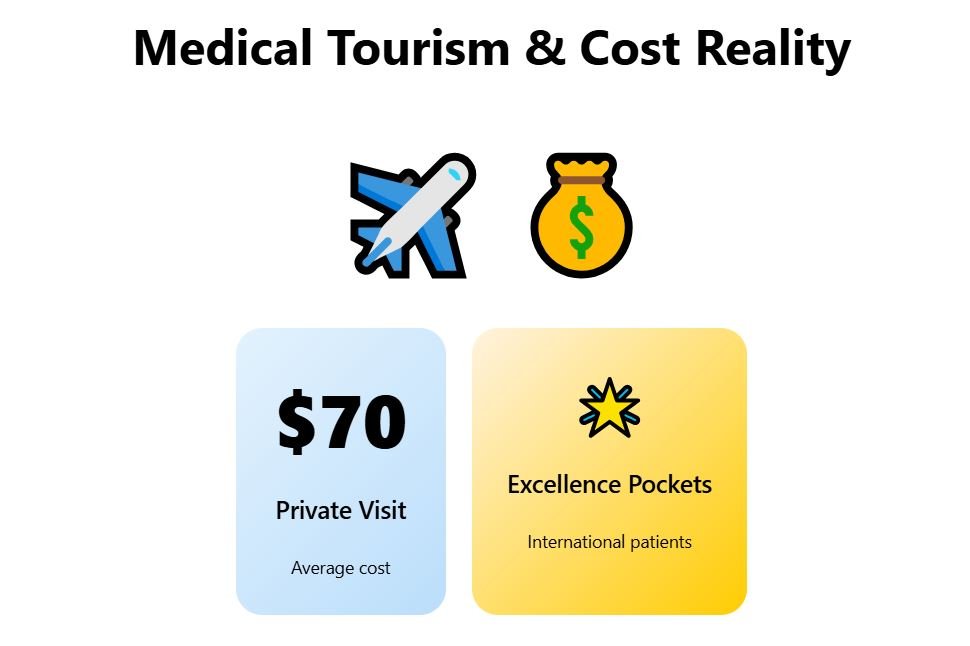
Medical tourism has created pockets of excellence in private care, particularly in urban centers where facilities target international patients. The private system delivers good quality in larger cities, and due to problems with the public system, many Greeks travel to major urban centers for hospitals with better equipment.
18th Place: Austria
Austria has world-class medical technology and excellent hospital care, but private healthcare is quite expensive.
The EHCI score of 799 ranks Austria in the top 10 of all European countries. The Numbeo rating of 78.5 reflects excellent clinical care and high patient satisfaction.
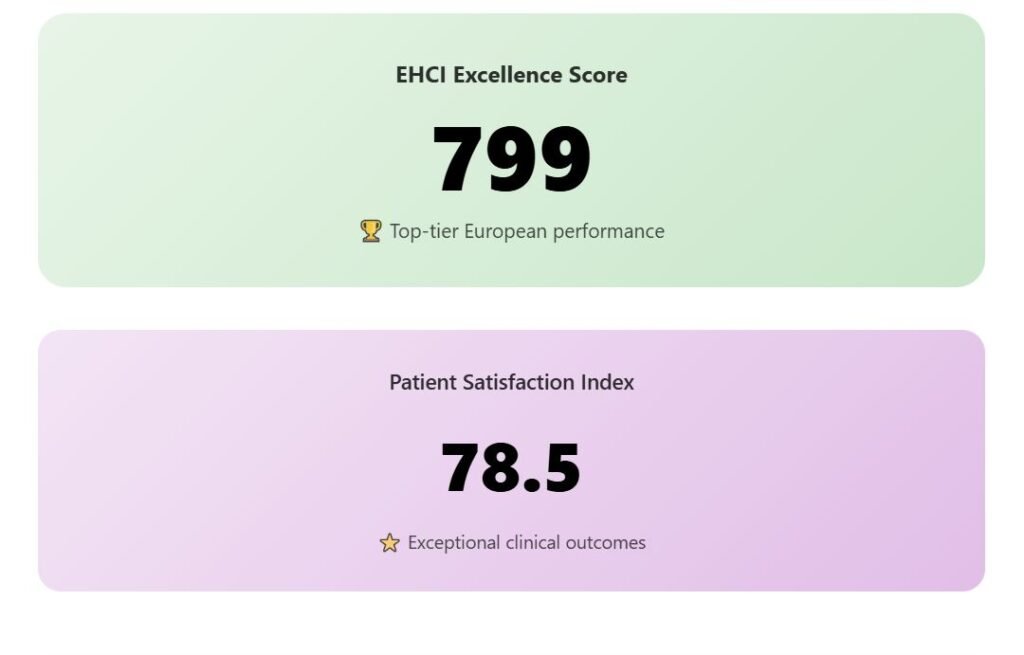
But it is expensive if you are not covered by the system. Austrian hospitals feature advanced medical technology and excellent specialist care that rivals any European system. The public system provides comprehensive coverage that works well for routine needs and emergency situations.

There are some bottlenecks in primary care that create delays for non-emergency treatment and push patients toward expensive private alternatives. The US$124 private visit cost exceeds neighboring Slovenia by US$66 and Hungary by US$54, making Austria one of the most expensive places in Europe for private healthcare.
17th Place: Malta
Malta offers EU membership, English-language healthcare, and Mediterranean climate, but the small size creates unique healthcare delivery challenges.
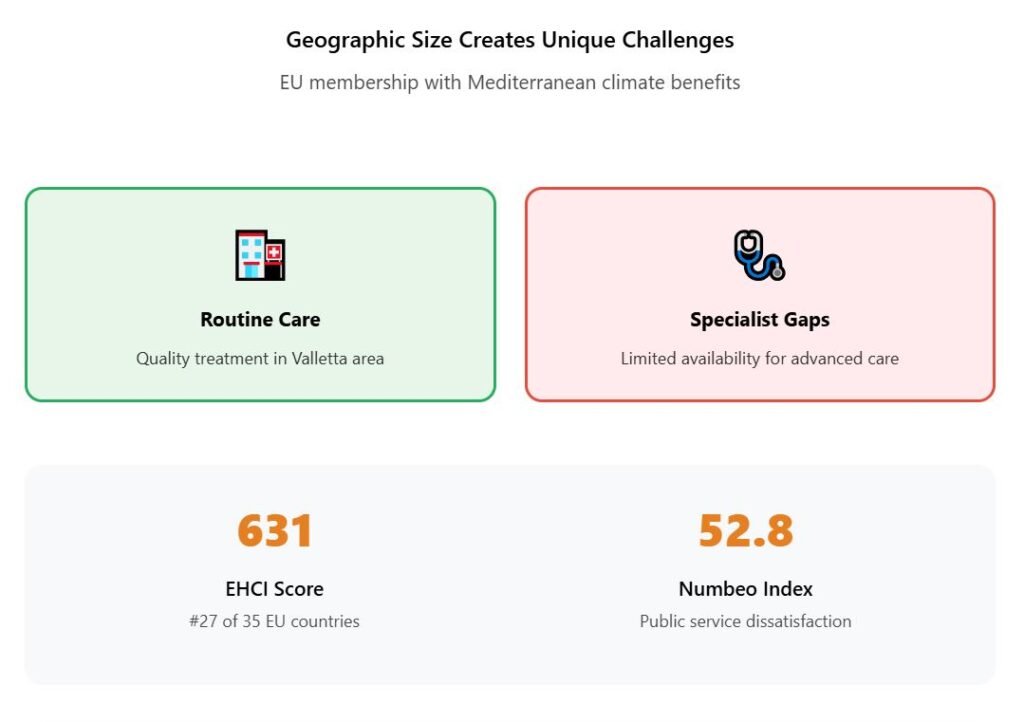
Limited specialist availability and geographic constraints mean serious conditions often require travel to larger European medical centers.
The EHCI score of 631 ranks Malta 27th out of 35 European countries. The Numbeo Health Index of 52.8 reflects widespread dissatisfaction with public services.
Still, private services are relatively affordable — private doctor visits cost on average just US$24, to the point of attracting medical tourists. Modern facilities in the Valletta area provide quality routine treatment.
Limited emergency care options mean complex procedures often require medical travel to mainland Europe. The healthcare system handles routine needs, but you need backup planning for serious medical conditions.
The next country offers a different small-country approach with stronger regional healthcare integration.
16th Place: Slovenia
Slovenia combines decent efficiency with reasonable healthcare costs, creating one of the best systems among former Yugoslavia countries.
Small population and limited resources create constraints, but the strategic location of this Alpine country also presents multiple benefits.
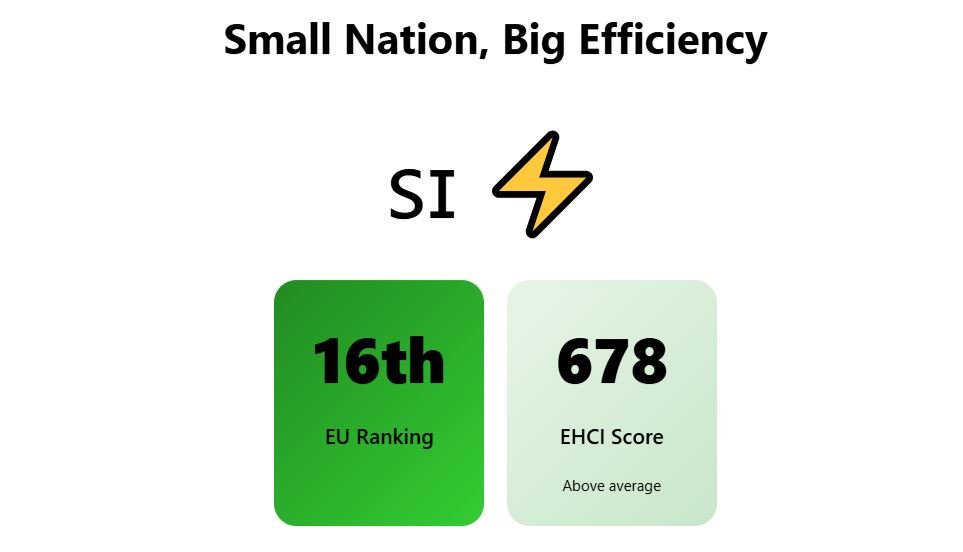
The EHCI score of 678 puts Slovenia in the mid-tier of European nations — a good performance for such a new country. Private doctor visits cost US$58 — half the price of neighboring Austria and four times less than Denmark.
Proximity to Austrian and Italian medical centers provides backup options for complex procedures that small domestic facilities cannot handle. Small-town hospitals lack capacity for serious conditions, requiring travel to Ljubljana for advanced care.
15th Place: Lithuania
Lithuania has made significant healthcare improvements since EU accession, with systems that now outperform some Western European countries in specific areas.
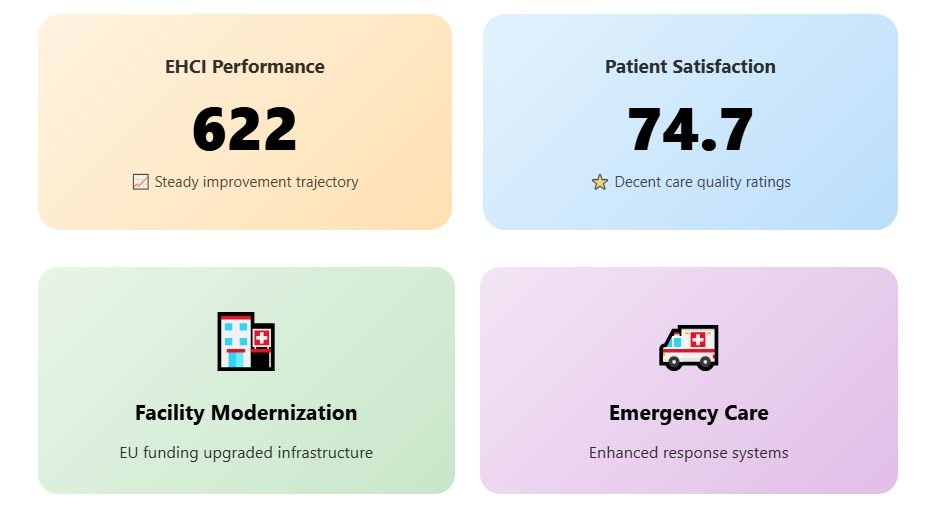
Lithuania’s Numbeo Health Care score of 74.7 puts it above heavyweights like Germany or Italy.
The growing private sector provides alternatives to public system bottlenecks, with private GP visits costing US$65. Specialist shortages in certain areas create access problems that force patients to wait or travel to larger cities.
14th Place: Bulgaria
Bulgaria has private doctor visits averaging just US$16 — the lowest cost in the entire EU — but the bargain comes with important considerations.
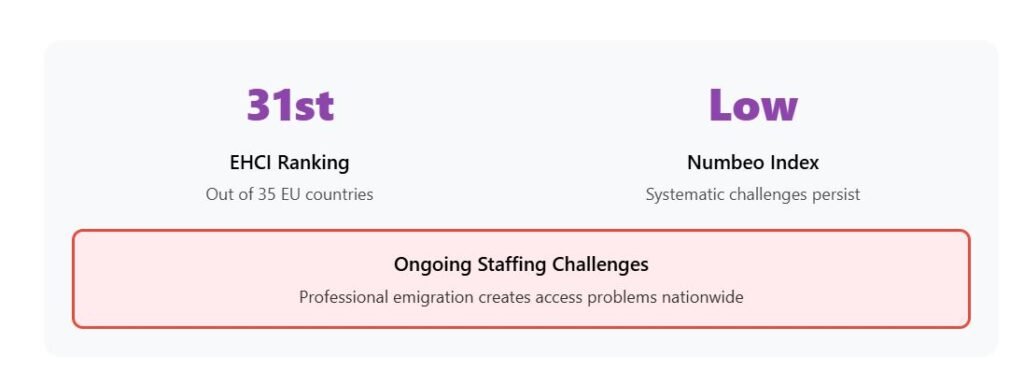
The system faces ongoing infrastructure and staffing challenges that create access problems throughout the country. Bulgaria has the second lowest public health spending in the EU — just above Romania.
That partially explains why private healthcare is so affordable (since doctors have not many alternatives). Sofia and Plovdiv feature improving facilities and growing medical tourism sectors that bring international standards to urban centers. Modern equipment and trained professionals concentrate in these major cities.
Recently, the Japanese Tokuda Group opened in Sofia one of the largest private hospitals in the Balkans. In both the private and public system, language barriers often affect expats seeking healthcare services outside tourist areas.
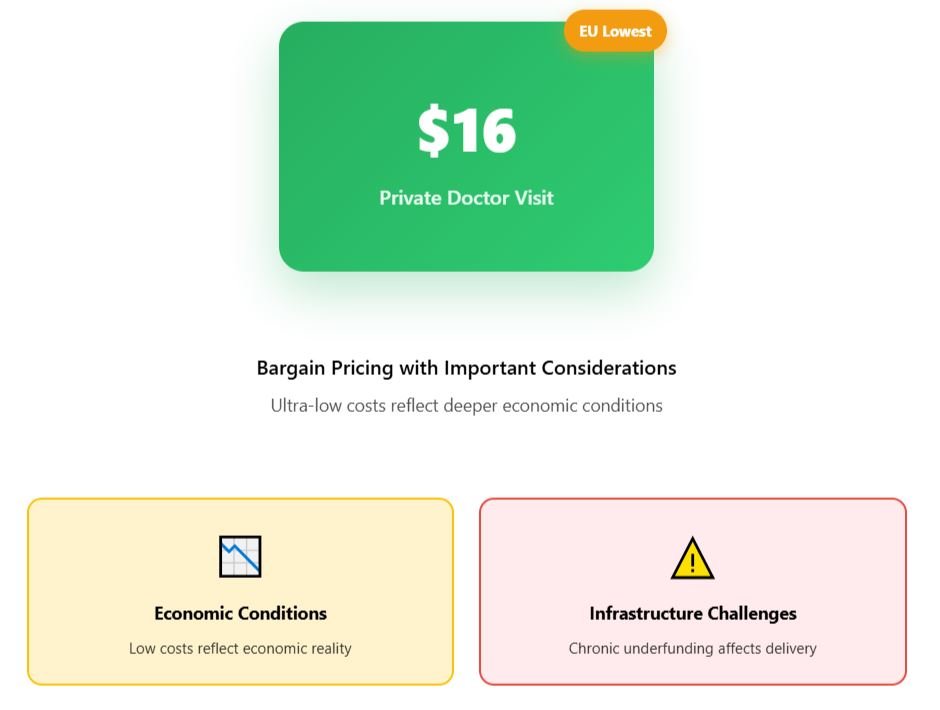
Like many other countries in the region, doctor shortages exist as medical professionals emigrate to Western Europe for better compensation.
13th Place: Cyprus
Cyprus offers English-language healthcare, EU standards, and Mediterranean lifestyle, but island limitations create specific healthcare considerations.
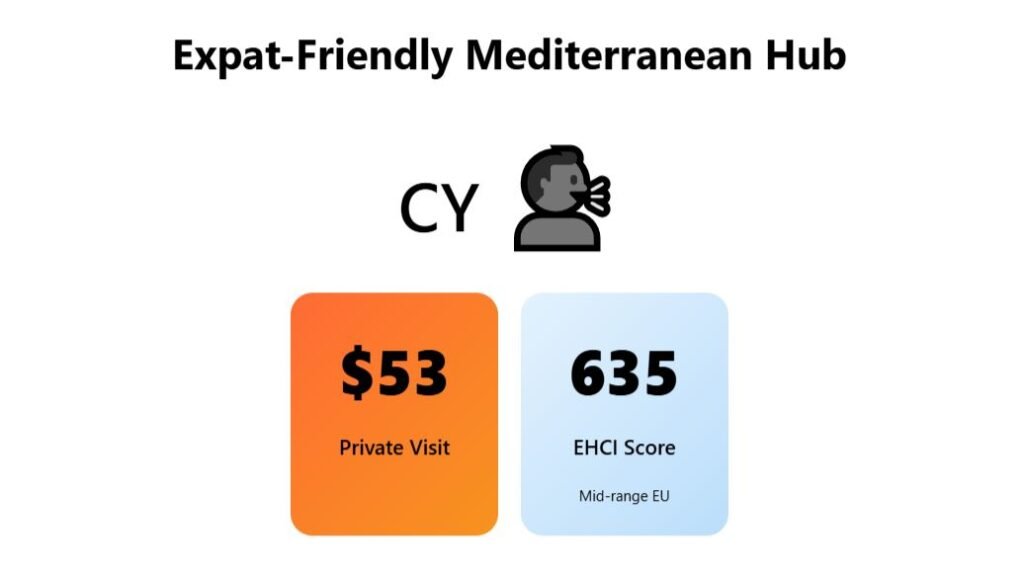
Private doctor visits cost on average US$53 — to put it into perspective, in the US the average price in 2022 was US$104. English-speaking medical professionals eliminate language barriers that create problems in other European countries.
Specialist availability for complex conditions creates some access gaps that might require medical travel to mainland Europe in some cases. But the healthcare sector in Cyprus is receiving huge private investments and world-class facilities are being built in Nicosia and other cities.
Overall investments also increased considerably. Eleven years ago Cyprus had less healthcare investment per capita than Portugal or Slovenia — by 2022, it was already ahead of both.
12th Place: Czechia
International perceptions lag behind reality, as the Czech system now delivers high-quality care at costs that surprise Western European expats.
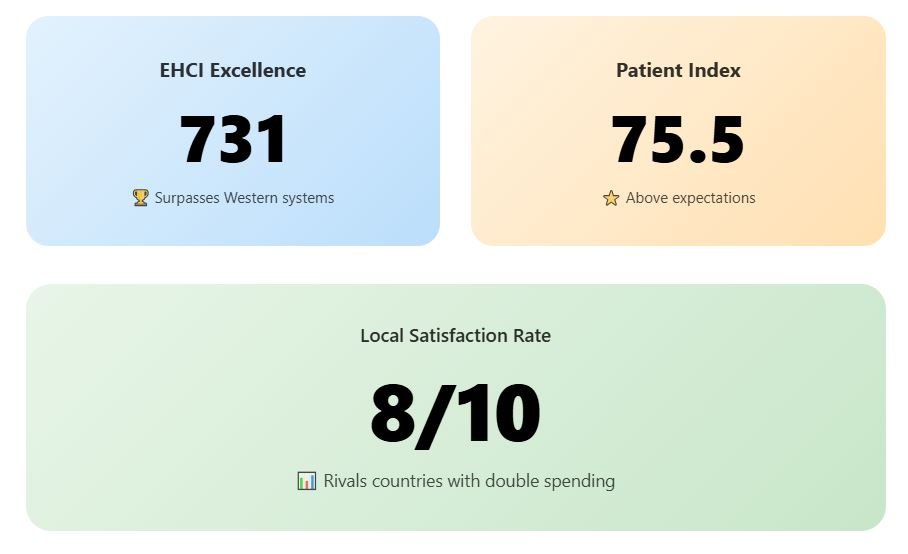
The EHCI score of 731 places Czechia well above many established Western systems. The Numbeo Health Index of 75.5 reflects patient satisfaction among the 10 highest in Europe.
When I asked Czech locals about their healthcare system, one of them told us:
“Most people complain about the public health care system, because they have some bad experience or know someone who does. But honestly, that happens in every industry. There’s room for improvement but man… is it better than people realize.”
Modern facilities throughout Prague and Brno feature equipment that matches Western European standards. Private care options cost less than in Western Europe while maintaining quality that attracts medical tourists.
Private clinics in major cities offer convenient and easy-to-schedule doctor visits and exams — often with English-speaking professionals.
11th Place: Spain
Spain attracts millions of expat retirees, but they should be aware that the different autonomous communities have considerable regional disparities.
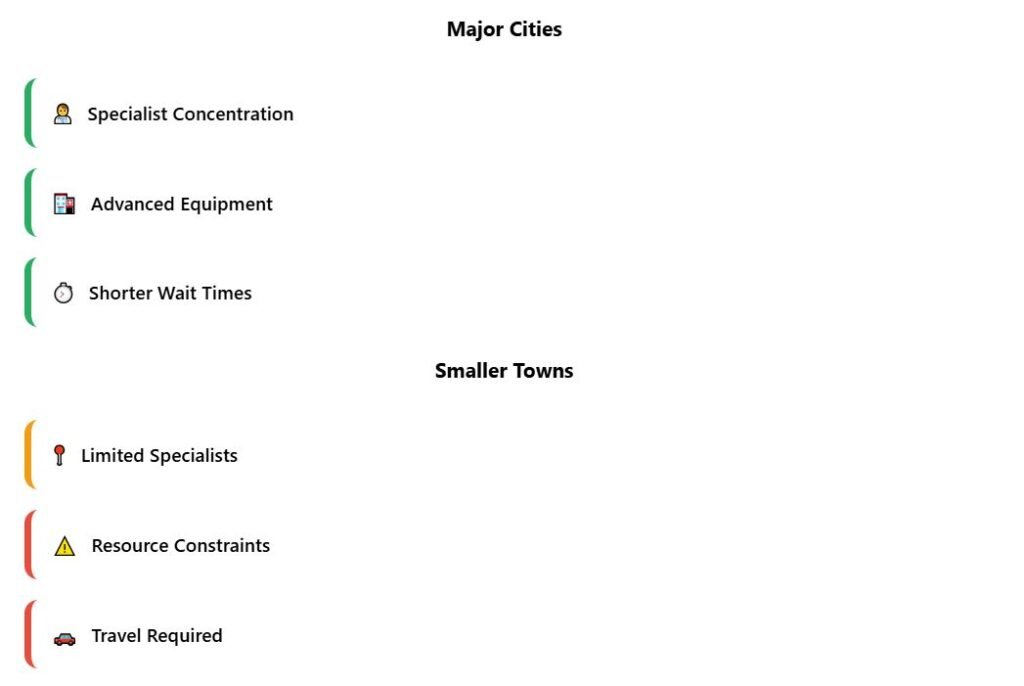
The Numbeo Health Index of 77.3 reflects strong patient satisfaction despite system constraints and is among the top 5 in Europe. Private costs average on the higher side for European standards, but are cheaper when compared to the US.
Spain has one of the highest life expectancies in the world, although healthcare is not the sole reason — Mediterranean diet and physical activity contribute too.
Just like in Italy, Spain has huge regional discrepancies. Northern regions have top-notch healthcare, while southwestern autonomous communities lag behind. All the 10 best hospitals in Spain are in 5 cities: Madrid, Barcelona, Pamplona, Seville, and Valencia.

So in more “desert” regions (for lack of a better word) like Extremadura, routine procedures and specialist appointments create frustrating delays. Madrid, Barcelona, Valencia, and so on offer better resources and shorter wait times compared to rural areas.
You might think: “Well, I can just travel from one autonomous community to another, and use their public services, right?”
Not really. Autonomous communities manage healthcare independently, so there is some bureaucracy and often patient data is not available nationwide.
10th Place: Slovakia
Starting our top 10, Slovakia has private doctor visits for an average price of just US$30 and has built a healthcare system that efficiently serves its population despite limited resources.
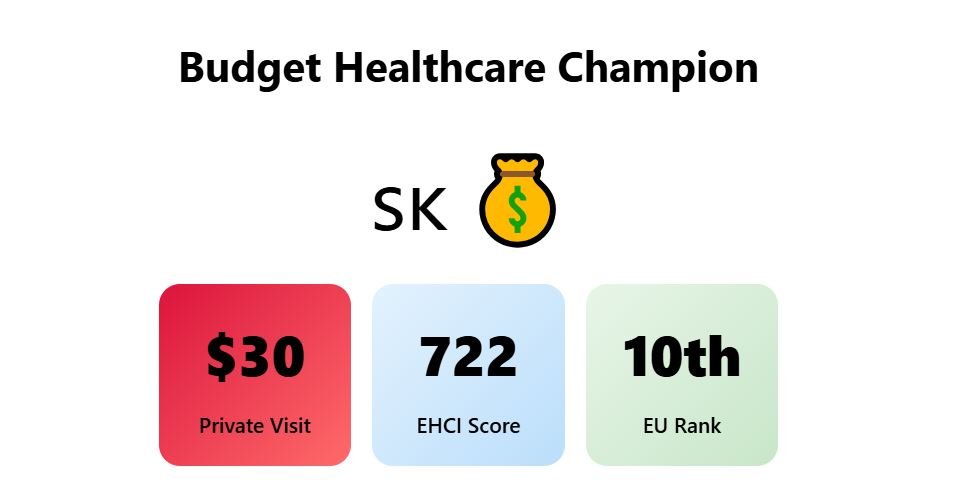
One Slovak gave us the following opinion:
“Private clinics are not really a thing outside big cities (except dentists who are predominantly private), but those are pretty good for general care and prevention. But, the moment you need anything more complex, you go to the public system anyway. I personally never had a bad experience — me and my family members have always been adequately treated.”
A local also mentioned that, while some hospitals are in appalling state visually and often have long waiting times for an appointment, once you get what you need, the quality is decent.
Private alternatives remain affordable, making them accessible when public wait times extend too long. Different than many other countries in this ranking, some of the best Slovak hospitals are not in its capital (Bratislava), but in secondary cities.
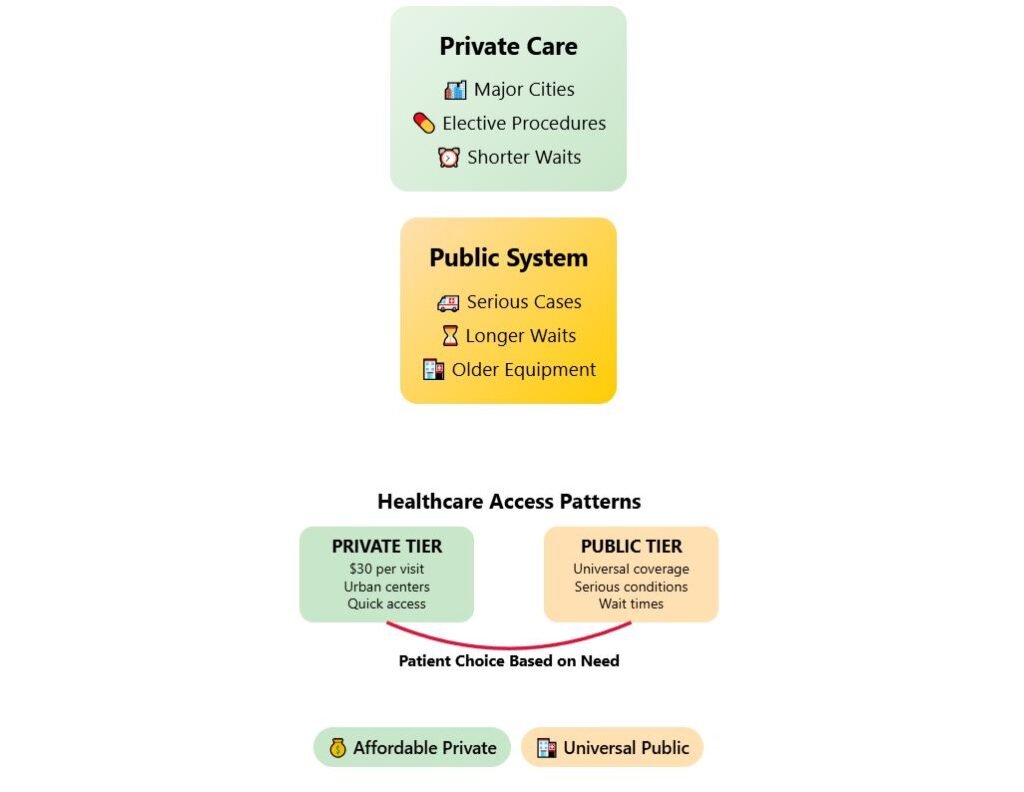
Another perk is that Slovakia’s central European location provides access to medical care in neighboring countries when specialized treatment exceeds domestic capabilities.
9th Place: Portugal
Portugal is an interesting country, at least according to the opinions Portuguese people gave me when I asked them to rate their healthcare.
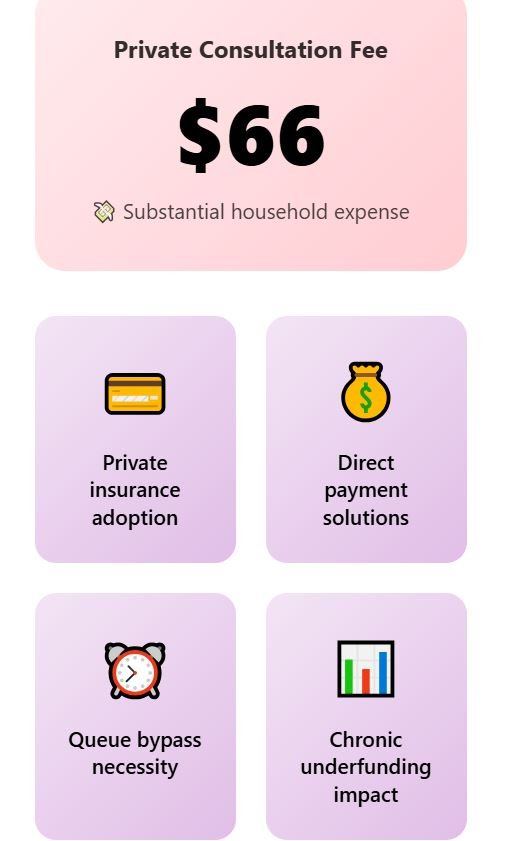
One Portuguese resident described the public system as “entirely free and very good” for cancer treatment, but “awful” for everyday needs.
Another one told us:
“We have the first centre for pancreatic cancer treatment in Europe, at the Champalimaud Foundation, which I’m proud of. Still, in my opinion, public healthcare differs between the capital and smaller towns. Personally, my medical experiences have been good, but I know that’s not always the case, particularly when booking appointments for family doctors in public hospitals.”
So in Portugal you get good care when your life depends on it, but struggle with routine appointments and minor procedures.
Private doctor visits cost on average US$66, and both the EHCI score and the Numbeo Health Index score of Portugal are surprisingly high for a country that is economically behind most EU nations.

8th Place: Estonia
Estonia has revolutionized healthcare delivery through digital innovation, creating systems that other EU countries are now trying to copy.
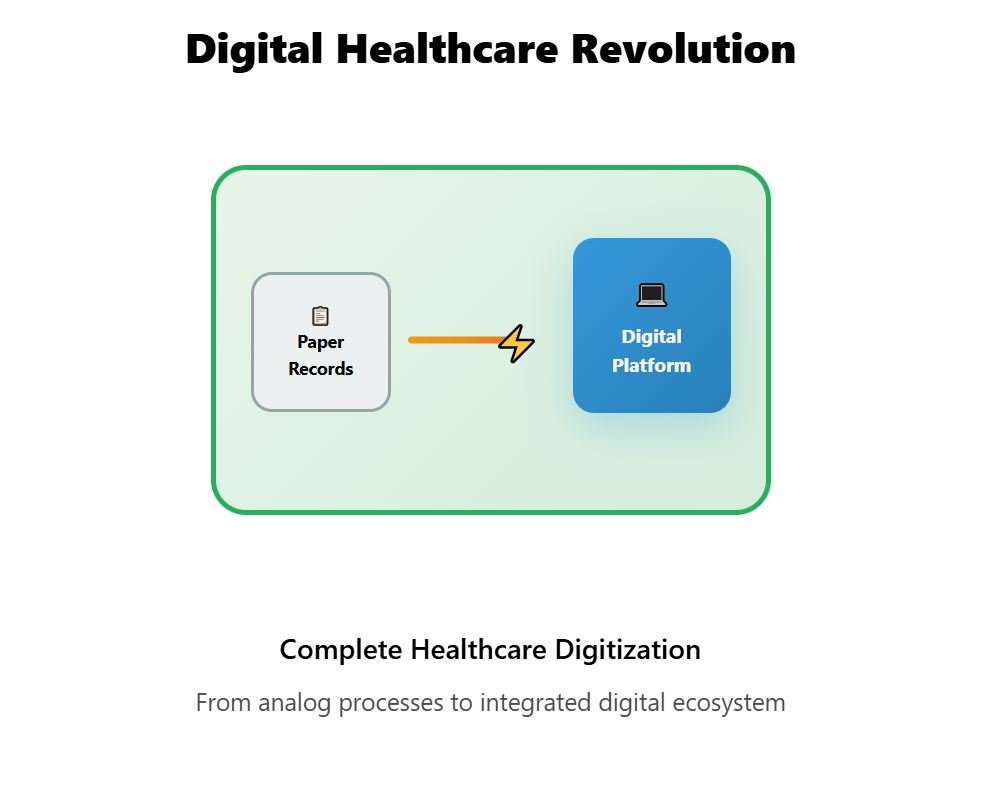
Advanced digital health records and telemedicine capabilities coexist with traditional challenges of small-country specialist availability.
The EHCI score of 729 and Numbeo rating of 74.8 (among the 10 highest in the EU) reflect patient satisfaction with these digital improvements.
Digital prescriptions eliminate paperwork. Integrated health records let doctors access your medical history instantly. Appointment systems reduce scheduling conflicts and administrative waste.
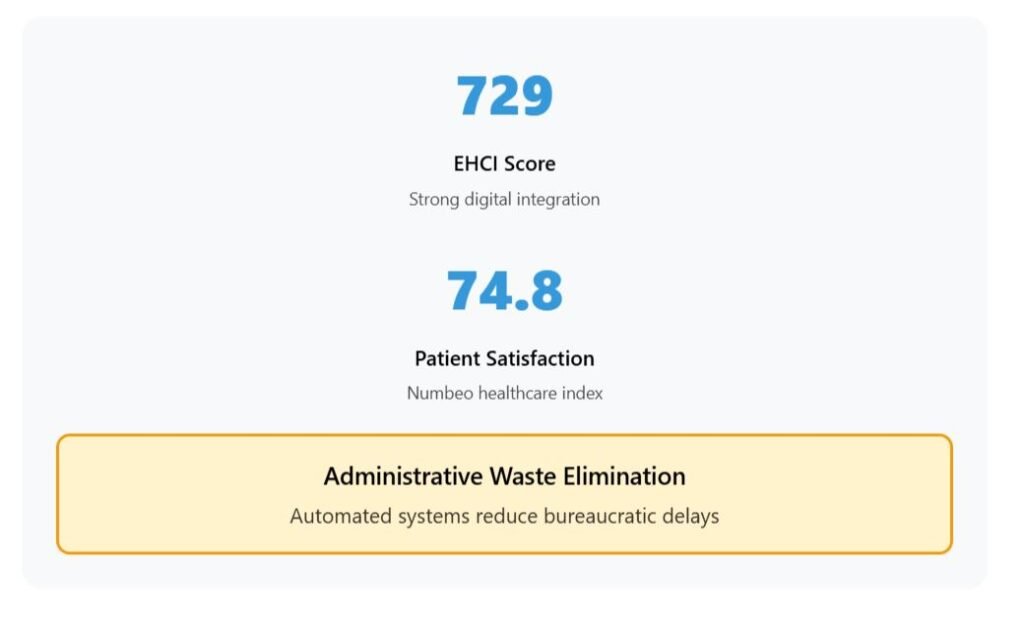
Other European countries are looking to Estonia to model their own solutions to streamline healthcare systems, and the Estonians even offered the British help to move the NHS to the digital era.
7th Place: Germany
Germany offers world-class healthcare with comprehensive coverage, but the system’s complexity can overwhelm expats unfamiliar with German bureaucracy.
Private doctor visits cost on average US$58, but nearly all residents carry mandatory insurance coverage that eliminates these costs.
Cities like Munich, Hamburg, and Hannover feature superior healthcare infrastructure with state-of-the-art equipment and specialist concentrations. The top hospitals are fairly distributed across the western part of Germany.
Language barriers complicate medical communication when German fluency becomes necessary for proper care coordination.
I asked a German how he would rate the healthcare in his country, and his answer was curious:
“I’d rate 9 for private healthcare, 7 for our German public healthcare, and 4 for the ability to get an appointment quickly.”
6th Place: Finland
In Finland, excellent healthcare and comprehensive coverage coexist with wait times that drive some residents toward private care costing US$80 per visit.
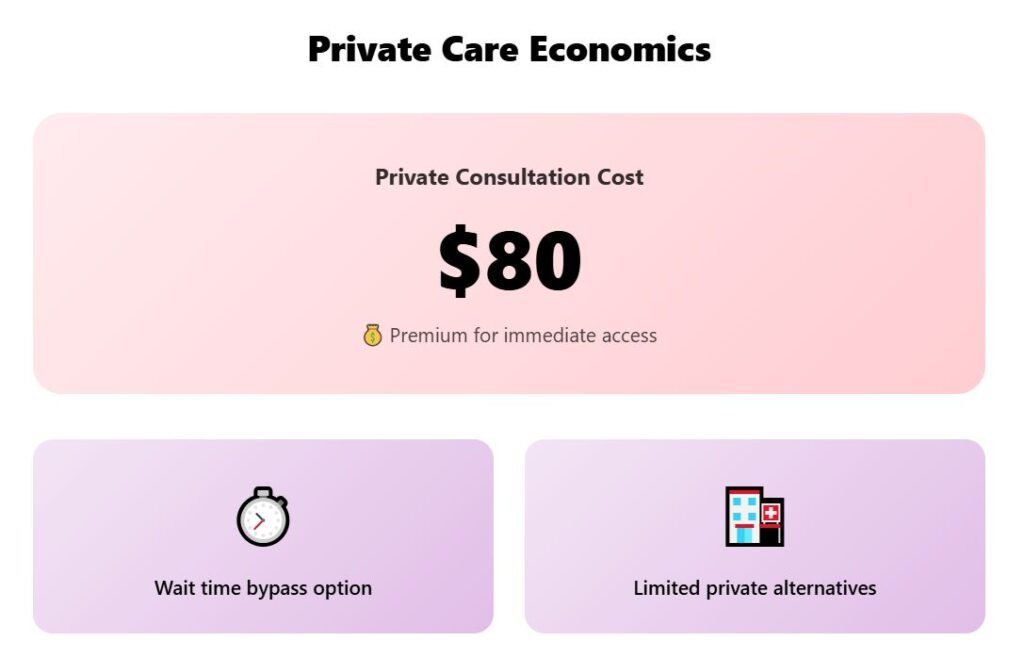
A common opinion regarding the public system is that it’s good once you are in the system and receiving help for something a bit more complex.
I asked a Finn to rate Finland’s public healthcare. His answer was:
“I would give 7 for the public system. But when it comes to getting urgent care or just a quick appointment at your local clinic, the experience can be less great.”
Some sectors shine more than others in Finland — for example, excellent maternal and child health services support families throughout the country.
Longer waits for non-urgent procedures characterize public care. Limited private sector development provides alternatives for bypassing wait times.
5th Place: Luxembourg
Starting the top 5 is a micro-state. Luxembourg’s extraordinary wealth per capita creates a healthcare system with resources that most countries can only dream of achieving.
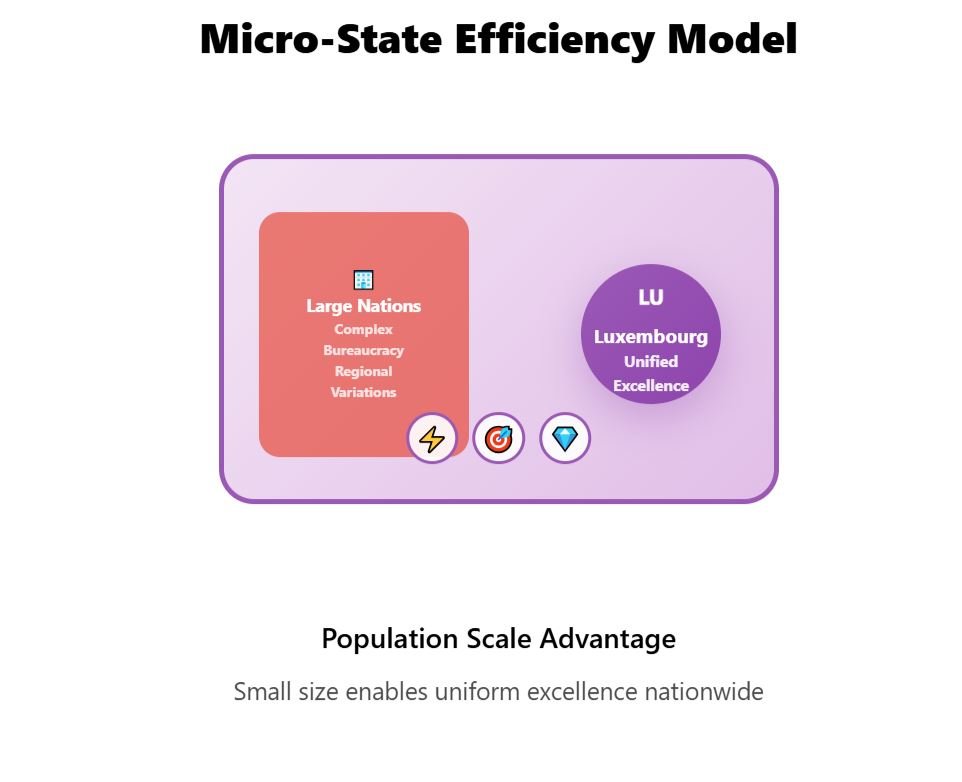
The EHCI score places Luxembourg in the top tier of EU countries. High salaries and tax rates fund near-instant access to specialists — a benefit not found in many other wealthy European nations.
Short wait times eliminate the delays that plague other systems. Excellent facilities feature advanced medical technology throughout the country.
Small population and massive financial resources create healthcare delivery that eliminates most common European system problems.
PS: I have some really good news: FREE FOR A LIMITED TIME: Grab your Expat Wealth & Lifestyle Compass ($108 value) today! Includes our 74-page guide of Affordable European Cities, our Zero-Tax countries report, and our expat checklist. http://patreon.com/The_Expat Join us here before this offer ends.
4th Place: Sweden
Sweden combines a wealthy budget with healthcare excellence, creating a system that delivers outstanding outcomes.

World-class medical research drives innovation throughout Swedish hospitals. Excellent preventive care contributes to high life expectancy rates. Public institutions provide universal access to healthcare services.
Limited private sector alternatives focus mainly on cosmetic and dental services and are relatively affordable for Scandinavian standards.
There are criticisms that the system is overburdened and quality dropped due to demographic changes in Sweden. Even considering this quality drop, it is still among the best in Europe.
Longer waits for elective procedures characterize the public system.
3rd Place: Netherlands
Opening the top 3, the Netherlands has created a unique healthcare model that combines universal coverage with market mechanisms, achieving exceptional patient satisfaction and clinical outcomes.
The Numbeo index of 80.6 is the highest among all countries and the EHCI score of 883 is just below Switzerland.
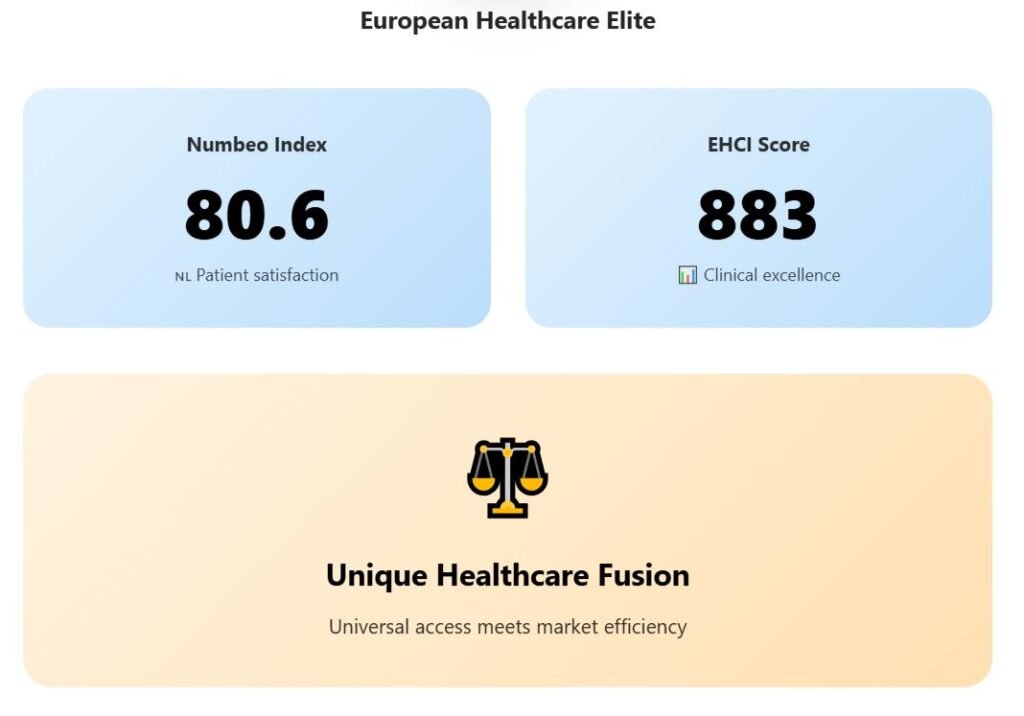
Competition among insurers drives efficiency while maintaining quality standards. The Netherlands, just like Switzerland, does not really have a “public” healthcare system, but multiple private providers that compete against each other.
Strong primary care gatekeeping means general practitioners coordinate all patient care and act as the first contact point. Patient choice operates within a structured system that balances freedom with clinical oversight.

The system focuses on preventive care that reduces long-term healthcare costs. Integrated care delivery coordinates services across multiple providers and specialties.
One remarkable aspect of the Netherlands is how hospitals are well distributed across the country. Of the 10 best hospitals in the country, each of them is in a different city.
The next country on this ranking is a neighbor of the Netherlands.
2nd Place: Belgium
The EHCI score ranks Belgium 5th in Europe, and a Numbeo rating of 75.8 reflects high satisfaction. But where Belgium really shines is in the costs: on average, a private doctor visit costs just US$41.

Prices are relatively cheap because of a system called the mutuelle or ziekenfonds. It reimburses a large portion of costs for medical services, lowering the out-of-pocket expenses for patients.
Just like in the Netherlands, in Belgium the best hospitals are well distributed across the country, in cities like Ghent, Bruges, and Leuven.
UZ Leuven in Leuven is one of the top European spots in medical research. Cliniques universitaires Saint-Luc in Brussels provides advanced treatments. UZ Gent in Ghent offers specialized pediatric healthcare. CHU de Liège delivers comprehensive services throughout Wallonia.
1st Place: France — The Best Healthcare in Europe
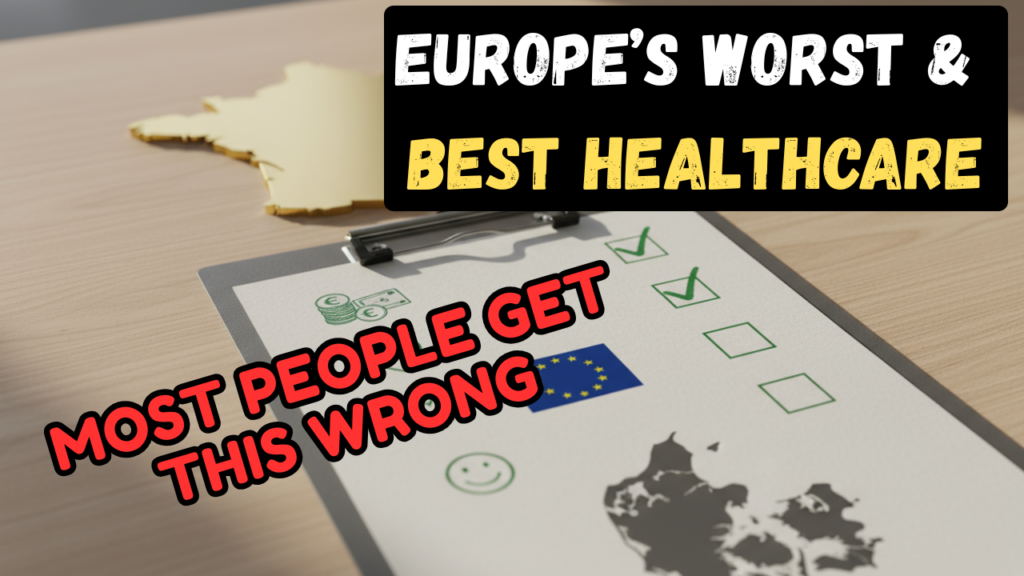
France achieves what most countries only dream of: world-class healthcare quality combined with affordability that makes excellent care accessible to everyone.
Private doctor visits cost on average just US$30, thanks to a system similar to the one we saw in the case of Belgium and its mutuelles.

Universal coverage through Assurance Maladie actually works. Private care costs less than public care in many countries while delivering premium service. The French national Social Security system negotiates the medical fees, reducing the prices.
Hôpital Pitié-Salpêtrière in Paris is among the leaders in Europe in medical research. Hôpital de la Croix-Rousse in Lyon provides advanced treatments throughout the Rhône region. The huge Hôpital de Hautepierre in Strasbourg delivers comprehensive services in eastern France, and so on.
However, even the best healthcare in Europe has some flaws. As a local told us when I asked him to rate the French healthcare:
“I would give an 8 for the public, and honestly 10 for private. The worst are of course medical deserts. French healthcare is great anywhere unless you are in the middle of nowhere.”

Now, how easy is it to obtain a residence visa in all these countries I mentioned today? To answer this question, I ranked ALL 27 EU countries on how easy it is to obtain a temporary residence permit.
Levi Borba is the founder of expatriateconsultancy.com, creator of the channel The Expat, and best-selling author. You can find him on X here. Some of the links above might be affiliated links, meaning the author earns a small commission if you make a purchase.




